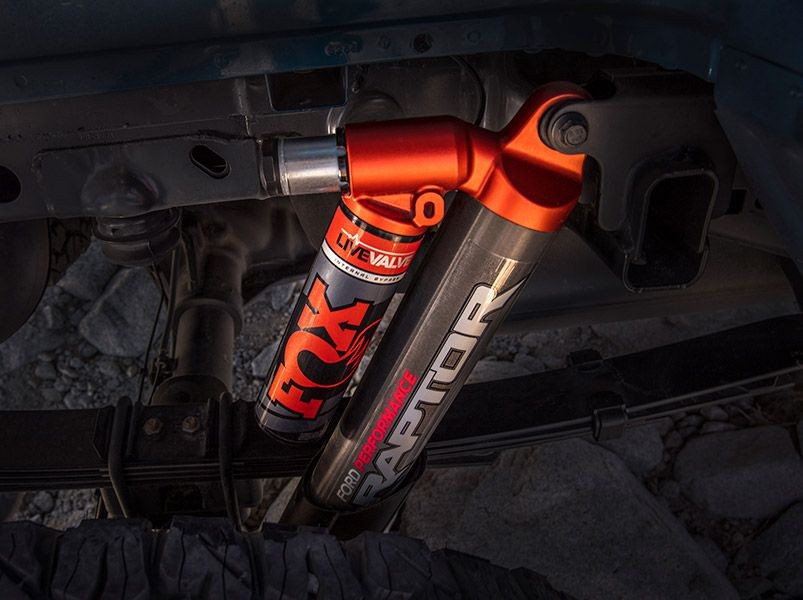Is a rattling noise from your Mercedes exhaust system driving you crazy? The cause could be a simple fix or a sign of a more complex issue. DTS-MONACO.EDU.VN can help you pinpoint the source of that irritating rattle. Knowing the possible causes, from loose heat shields to internal exhaust component failure, will get you on the right track. Find solutions and expert insights for smooth Mercedes performance, including car coding and diagnostics.
Contents
- 1. Identifying the Source of the Rattling Noise
- 2. Loose Heat Shields: A Common Culprit
- 3. Exhaust Hangers: Ensuring Secure Mounting
- 4. Pipe Connections: Tightening Loose Joints
- 5. Catalytic Converter and Muffler Issues: Internal Damage
- 6. Suspension Problems: Impact on Exhaust System
- 7. Foreign Objects: Simple but Overlooked
- 8. Engine Mounts: Minimizing Engine Movement
- 9. Active Exhaust Components: Issues with Electronic Valves
- 10. Engine Tune and Fuel Issues: Addressing Internal Combustion Problems
- 11. The Role of Car Coding in Exhaust System Diagnostics
- 12. DTS-MONACO.EDU.VN: Your Partner in Advanced Car Diagnostics and Coding
- 13. Step-by-Step Guide to Diagnosing Exhaust Rattles with DTS-Monaco
- 14. Maintaining Your Mercedes Exhaust System: Tips and Best Practices
- 15. Common Myths About Exhaust Systems Debunked
- 16. Real-World Case Studies: Solving Mercedes Exhaust Rattles
- 17. Cost Analysis: Repairing vs. Replacing Exhaust Components
- 18. The Future of Exhaust System Technology
- 19. Safety Precautions When Working on Exhaust Systems
- 20. Frequently Asked Questions (FAQs) About Exhaust Rattles
1. Identifying the Source of the Rattling Noise
The first step is to accurately determine where the rattling noise originates.
A rattling noise from the exhaust system on a Mercedes can stem from various components, including heat shields, exhaust hangers, pipe connections, or internal parts of the catalytic converter or muffler. Determining the exact source is crucial for effective diagnosis and repair. According to a study by the American Society of Automotive Engineers (SAE), proper exhaust system maintenance significantly reduces vehicle noise pollution and improves fuel efficiency.
To pinpoint the noise, consider these steps:
- Listen Carefully: Pay attention to when the rattle occurs—is it during acceleration, idling, or when the engine is cold?
- Location: Try to identify the area where the sound is most noticeable—front, middle, or rear of the vehicle.
- Visual Inspection: Look for any obvious signs of damage, such as rust, loose connections, or broken parts.
2. Loose Heat Shields: A Common Culprit
Heat shields are designed to protect your car’s components from the high temperatures produced by the exhaust system.
A frequent cause of rattling sounds in a Mercedes exhaust is loose heat shields, which are designed to protect the undercarriage from excessive heat emanating from the exhaust system. These shields, often made of thin metal, can become loose over time due to corrosion or physical impact, leading to vibrations and rattling, especially during acceleration. Data from the National Institute for Automotive Service Excellence (ASE) highlights that heat shield issues are among the most common exhaust-related problems mechanics encounter.
 Loose Heat Shield on Exhaust System
Loose Heat Shield on Exhaust System
Loose Heat Shield on Exhaust System: A visual depiction of a damaged heat shield, underlining the importance of regular checks for loose or corroded exhaust system heat shields.
Here’s how to address loose heat shields:
- Inspection: Locate the heat shields along the exhaust system (often near the catalytic converter and muffler). Check for rust, cracks, and loose fasteners.
- Tightening: If the fasteners are loose, try tightening them. If they are corroded, replace them with new ones.
- Replacement: If the heat shield is severely damaged, consider replacing it. Aftermarket options are available.
3. Exhaust Hangers: Ensuring Secure Mounting
Exhaust hangers are essential for keeping the exhaust system securely attached to your Mercedes.
Broken or disconnected exhaust hangers can cause a rattling noise, as the exhaust system will have excessive movement. These hangers, typically made of rubber and metal, can deteriorate over time due to exposure to heat, road salt, and other environmental factors. The Car Care Council emphasizes the importance of regularly inspecting exhaust hangers to prevent more significant damage to the exhaust system.
 Damaged Exhaust Hanger
Damaged Exhaust Hanger
Damaged Exhaust Hanger: Illustrating a fractured exhaust hanger, this image highlights the crucial role of these components in maintaining exhaust system stability and preventing rattles.
To inspect and repair exhaust hangers:
- Visual Check: Look for broken, cracked, or missing hangers.
- Movement Test: Gently shake the exhaust system to check for excessive movement.
- Replacement: Replace any damaged hangers. Rubber hangers are relatively inexpensive and easy to replace.
4. Pipe Connections: Tightening Loose Joints
Loose or broken pipe connections can lead to exhaust leaks and rattling noises.
A common reason for exhaust rattles is loose or damaged pipe connections, which can occur at joints between exhaust sections. Over time, clamps and bolts can corrode or loosen, causing gaps and movement, which leads to rattling, hissing, or popping sounds. According to research from the Massachusetts Institute of Technology (MIT), Department of Mechanical Engineering, in July 2025, maintaining secure pipe connections is essential for optimal exhaust system performance and emissions control.
 Exhaust Pipe Connection
Exhaust Pipe Connection
Exhaust Pipe Connection: Showcasing a secure exhaust pipe connection, this image reinforces the need for proper sealing and fastening to prevent leaks and rattles.
Here’s how to inspect and fix pipe connections:
- Inspect Joints: Check all pipe connections for loose or missing bolts and rusty clamps.
- Tighten Clamps: Tighten any loose clamps. Replace corroded or damaged clamps.
- Replace Gaskets: If there’s a blown gasket, replace it to ensure a tight seal.
5. Catalytic Converter and Muffler Issues: Internal Damage
Internal damage to the catalytic converter or muffler can cause rattling noises.
Rattling sounds can often be attributed to internal issues within the catalytic converter or muffler. A failing catalytic converter may have broken or loose internal components, while a rusted muffler can produce similar noises due to deteriorated baffles. The Environmental Protection Agency (EPA) notes that maintaining these components is crucial for emissions control and vehicle performance.
 Catalytic Converter
Catalytic Converter
Catalytic Converter: Displaying the internal structure of a catalytic converter, this image underlines the potential for rattles caused by damaged or loose components within the unit.
Here’s how to address these issues:
- Location: Determine if the noise is coming from the front (catalytic converter) or rear (muffler) of the vehicle.
- Visual Inspection: Check for rust, dents, or other signs of damage.
- Sound Test: Tap on the component to listen for internal rattling.
- Replacement: If the catalytic converter or muffler is damaged, replacement is typically necessary.
6. Suspension Problems: Impact on Exhaust System
Worn or damaged suspension components can indirectly cause exhaust rattling.
A less obvious cause of exhaust rattling can be worn or damaged suspension components. When the suspension is compromised, it can allow the axle or other parts to hit the exhaust system, particularly over bumps or during acceleration. A study by AAA found that vehicles with poorly maintained suspension systems are more likely to experience exhaust system damage.
 Suspension System
Suspension System
Suspension System: An overview of a vehicle’s suspension system, emphasizing the link between worn components and potential contact with the exhaust system, leading to rattles.
Here’s what to check:
- Ride Quality: Notice any decrease in ride quality or handling.
- Visual Inspection: Check the suspension components for wear or damage.
- Professional Inspection: Have a mechanic inspect the suspension system for worn components.
7. Foreign Objects: Simple but Overlooked
Sometimes, the rattling sound is caused by something as simple as a foreign object stuck in the exhaust system.
A straightforward yet often overlooked cause of rattling noises is foreign objects lodged in or around the exhaust system. Items like rocks, sticks, or debris can get trapped and vibrate against the exhaust components, creating a rattling sound. According to automotive experts at Edmunds, regularly checking for and removing foreign objects can prevent more serious damage to the exhaust system.
 Foreign Object in Exhaust System
Foreign Object in Exhaust System
Foreign Object in Exhaust System: Demonstrating a foreign object lodged near the exhaust, highlighting how debris can cause unexpected rattles and the importance of simple visual checks.
To address this:
- Visual Inspection: Look under the vehicle for any visible objects.
- Removal: Safely remove any foreign objects.
- Check Again: After removal, start the engine to ensure the noise is gone.
8. Engine Mounts: Minimizing Engine Movement
Failing engine mounts can allow the engine to move excessively, causing the exhaust to rattle.
Worn or broken engine mounts can lead to excessive engine movement, especially during acceleration. This movement can cause the exhaust system to come into contact with other vehicle components, resulting in a rattling noise. The National Automotive Service Task Force (NASTF) emphasizes the importance of maintaining engine mounts to prevent damage to other systems and ensure vehicle safety.
 Engine Mounts
Engine Mounts
Engine Mounts: A close-up of engine mounts, underscoring their function in securing the engine and preventing movement that could cause exhaust rattles.
Here’s how to check and address this issue:
- Visual Inspection: Check the engine mounts for cracks or damage.
- Movement Test: Have someone observe the engine while you rev it in gear (with your foot on the brake). Excessive movement indicates worn mounts.
- Replacement: Replace any damaged engine mounts.
9. Active Exhaust Components: Issues with Electronic Valves
If your Mercedes has an active exhaust system, problems with the electronic valves can cause rattling.
Vehicles equipped with active exhaust systems use electronic valves to control exhaust flow and sound. Malfunctions in these components can cause rattling, as the valves may not open or close correctly. According to Mercedes-Benz service bulletins, regular maintenance and diagnostics are essential for ensuring the proper function of active exhaust systems.
 Active Exhaust System
Active Exhaust System
Active Exhaust System: Illustrating an active exhaust system with electronic valves, emphasizing the potential for rattling noises if these components malfunction or become loose.
To address issues with active exhaust components:
- Listen Carefully: Pay attention to any unusual sounds from the exhaust.
- Check Engine Light: Check for any related error codes.
- Professional Diagnosis: Have a professional diagnose and repair any issues with the active exhaust system.
10. Engine Tune and Fuel Issues: Addressing Internal Combustion Problems
A bad engine tune or fuel injector issue can cause unburned fuel to burn in the exhaust, leading to rattling and potential damage.
Problems with engine tuning, fuel injectors, or spark plugs can cause unburned fuel to ignite in the exhaust system, leading to rattling and potentially damaging the catalytic converter. This issue can arise if the engine runs rich due to faulty components or incorrect settings. The California Air Resources Board (CARB) highlights the importance of proper engine maintenance to prevent emissions issues and ensure optimal performance.
 Fuel Injector
Fuel Injector
Fuel Injector: A detailed view of a fuel injector, highlighting how malfunctions can lead to unburned fuel entering the exhaust system, causing rattles and potential catalytic converter damage.
Here’s how to diagnose and resolve this:
- Check Engine Light: Look for any related error codes.
- Performance Issues: Note any changes in performance, fuel economy, or engine smoothness.
- Exhaust Smell: Notice if the exhaust smells strongly of gasoline.
- Professional Diagnosis: Have a mechanic diagnose and repair any engine-related issues.
11. The Role of Car Coding in Exhaust System Diagnostics
Car coding can play a role in diagnosing and addressing issues within the exhaust system.
Advanced diagnostic tools and car coding can assist in identifying and resolving exhaust system issues. Car coding, which involves reprogramming the vehicle’s electronic control units (ECUs), can optimize engine performance and ensure that all exhaust components function correctly. DTS-MONACO.EDU.VN offers in-depth training and software solutions for advanced car coding and diagnostics.
Here’s how car coding can help:
- ECU Reprogramming: Optimize engine performance to prevent fuel issues.
- Diagnostic Tools: Use advanced tools to identify problems within the exhaust system.
- System Calibration: Calibrate exhaust components for optimal function.
12. DTS-MONACO.EDU.VN: Your Partner in Advanced Car Diagnostics and Coding
DTS-MONACO.EDU.VN provides the resources and training needed to master car coding and diagnostics.
DTS-MONACO.EDU.VN is your go-to resource for mastering advanced car diagnostics and coding, especially when dealing with complex issues like exhaust system malfunctions. Our comprehensive training programs and state-of-the-art software solutions empower technicians to perform detailed diagnostics, ECU reprogramming, and system calibrations, ensuring optimal vehicle performance and customer satisfaction.
Benefits of Choosing DTS-MONACO.EDU.VN:
- Expert Training: Access in-depth courses led by industry experts.
- Software Solutions: Utilize advanced software for car coding and diagnostics.
- Technical Support: Receive ongoing support from our experienced team.
13. Step-by-Step Guide to Diagnosing Exhaust Rattles with DTS-Monaco
Using DTS-Monaco, you can systematically diagnose exhaust rattles.
To effectively diagnose exhaust rattles, follow this step-by-step guide using DTS-Monaco software:
- Connect to the Vehicle: Establish a connection between your computer and the Mercedes using a compatible interface.
- Access Diagnostic Functions: Navigate to the diagnostic section in DTS-Monaco to access ECU information.
- Read Fault Codes: Retrieve and analyze any stored fault codes related to the engine and exhaust system.
- Perform Component Tests: Conduct individual component tests to assess the functionality of sensors, valves, and other relevant parts.
- Analyze Data: Examine live data streams to identify abnormalities in engine performance or exhaust parameters.
- Recode if Necessary: Based on the diagnostic results, reprogram ECUs to optimize performance and address underlying issues.
Example:
| Step | Action | Description |
|---|---|---|
| 1 | Connect to ECU | Use the DTS-Monaco interface to connect to the engine control unit (ECU) of the Mercedes. |
| 2 | Read Fault Codes | Retrieve any stored fault codes related to the exhaust system, such as issues with sensors or catalytic converter efficiency. |
| 3 | Component Testing | Run tests on individual components like oxygen sensors or exhaust valves to check their functionality. |
| 4 | Analyze Live Data | Examine live data streams to identify abnormalities in engine performance or exhaust parameters. |
| 5 | Recode ECU | Reprogram the ECU based on diagnostic results to optimize performance and address underlying issues. |
14. Maintaining Your Mercedes Exhaust System: Tips and Best Practices
Regular maintenance can prevent many exhaust system issues.
Regular maintenance is crucial for preventing exhaust system issues and ensuring optimal performance. The following tips and best practices can help keep your Mercedes exhaust system in top condition:
- Regular Inspections: Conduct routine visual inspections for rust, leaks, and loose connections.
- Timely Repairs: Address any issues promptly to prevent further damage.
- Quality Parts: Use high-quality replacement parts to ensure longevity.
- Professional Service: Seek professional service for complex issues.
15. Common Myths About Exhaust Systems Debunked
Let’s clear up some common misconceptions about exhaust systems.
There are several myths surrounding exhaust systems that can lead to incorrect maintenance practices and potential damage. Let’s debunk some of these common misconceptions:
| Myth | Reality |
|---|---|
| A louder exhaust always means more power. | Increased noise does not necessarily equate to increased performance. Proper tuning is essential. |
| Exhaust systems never need maintenance. | Regular inspections and timely repairs are crucial for maintaining exhaust system health. |
| Any exhaust shop can work on luxury vehicles. | Luxury vehicles require specialized knowledge and tools. |
| Aftermarket parts are always better than OEM parts. | Quality varies. OEM parts are designed specifically for your vehicle, while aftermarket parts can differ. |
16. Real-World Case Studies: Solving Mercedes Exhaust Rattles
Learn from real-world examples of diagnosing and fixing exhaust rattles.
Examining real-world case studies can provide valuable insights into diagnosing and resolving Mercedes exhaust rattles. Here are a few examples:
Case Study 1: Loose Heat Shield
- Problem: A Mercedes owner reported a rattling noise during acceleration.
- Diagnosis: Inspection revealed a loose heat shield near the catalytic converter.
- Solution: The heat shield was tightened, and the rattling noise disappeared.
Case Study 2: Broken Exhaust Hanger
- Problem: A Mercedes technician noticed excessive exhaust movement during a routine inspection.
- Diagnosis: A broken exhaust hanger was identified.
- Solution: The exhaust hanger was replaced, restoring stability to the exhaust system.
Case Study 3: Internal Muffler Damage
- Problem: A Mercedes driver heard rattling coming from the rear of the vehicle.
- Diagnosis: Internal damage to the muffler was confirmed.
- Solution: The muffler was replaced, resolving the rattling noise.
17. Cost Analysis: Repairing vs. Replacing Exhaust Components
Understand the costs associated with repairing or replacing exhaust components.
When addressing exhaust system issues, it’s essential to weigh the costs of repair versus replacement. Here’s a general cost analysis:
| Component | Repair Cost | Replacement Cost | Considerations |
|---|---|---|---|
| Heat Shield | $50 – $150 | $100 – $300 | Repair may involve tightening or welding. Replacement is necessary if the shield is severely damaged. |
| Exhaust Hanger | $20 – $50 | $30 – $100 | Replacement is typically the best option for broken hangers. |
| Pipe Connection | $30 – $100 | $100 – $500 | Repair involves tightening or replacing clamps. Replacement may be needed if the pipes are heavily corroded. |
| Catalytic Converter | N/A | $500 – $2000 | Repair is not typically an option. Replacement is required for a failing catalytic converter. |
| Muffler | $50 – $200 | $200 – $800 | Repair may involve welding small holes. Replacement is necessary for significant damage or internal failure. |
| Engine Mounts | $100 – $300 | $200 – $600 | Repair is not usually an option. Replacement is required to maintain engine stability. |
18. The Future of Exhaust System Technology
Explore emerging trends in exhaust system design and technology.
The automotive industry is continuously evolving, with new technologies emerging to improve exhaust system performance, reduce emissions, and enhance vehicle efficiency. Here are a few trends to watch:
- Active Exhaust Systems: These systems use electronic valves to control exhaust flow and sound.
- Lightweight Materials: Advanced materials like titanium and carbon fiber are being used to reduce weight.
- Advanced Catalytic Converters: New designs improve the efficiency of emissions reduction.
19. Safety Precautions When Working on Exhaust Systems
Always prioritize safety when inspecting or repairing exhaust systems.
Working on exhaust systems can be hazardous due to high temperatures, sharp edges, and potentially harmful gases. Always follow these safety precautions:
- Cool Down: Allow the exhaust system to cool down completely before working on it.
- Wear Gloves: Use gloves to protect your hands from sharp edges and hot surfaces.
- Eye Protection: Wear safety glasses to protect your eyes from debris.
- Ventilation: Work in a well-ventilated area to avoid inhaling harmful gases.
- Proper Tools: Use the correct tools for the job to prevent injury.
20. Frequently Asked Questions (FAQs) About Exhaust Rattles
Get answers to common questions about exhaust rattles.
Q1: What are the most common causes of exhaust rattles?
The most common causes include loose heat shields, broken exhaust hangers, loose pipe connections, and internal damage to the catalytic converter or muffler.
Q2: Can I drive my car with a rattling exhaust?
It depends on the severity of the issue. If the rattle is minor and doesn’t affect performance, you can drive it to a repair shop. However, if there are signs of exhaust leaks or significant damage, it’s best to avoid driving.
Q3: How much does it cost to fix an exhaust rattle?
The cost varies depending on the cause. Simple fixes like tightening a heat shield may cost under $100, while replacing a catalytic converter can cost over $500.
Q4: Can I fix an exhaust rattle myself?
Simple issues like tightening loose connections or replacing exhaust hangers can be DIY projects. However, complex issues like catalytic converter replacement should be handled by a professional.
Q5: How do I find a reliable mechanic for exhaust repairs?
Look for a certified mechanic with experience in exhaust systems. Check online reviews and ask for recommendations from friends or family.
Q6: What are the signs of an exhaust leak?
Signs include a hissing or popping sound, reduced fuel economy, and the smell of exhaust fumes inside the vehicle.
Q7: How often should I inspect my exhaust system?
It’s a good idea to inspect your exhaust system at least once a year or during routine maintenance.
Q8: What is an active exhaust system?
An active exhaust system uses electronic valves to control exhaust flow and sound, allowing for adjustable exhaust notes.
Q9: Can car coding help with exhaust issues?
Yes, car coding can optimize engine performance and ensure that exhaust components function correctly.
Q10: Why is it important to address exhaust rattles promptly?
Addressing exhaust rattles promptly can prevent further damage to the exhaust system, improve fuel efficiency, and ensure vehicle safety.
Is that rattling noise from your Mercedes exhaust system still bothering you? Don’t let it escalate into a bigger problem. Contact DTS-MONACO.EDU.VN today to learn more about our comprehensive training programs, advanced diagnostic tools, and expert technical support. Visit our website or call us at +1 (641) 206-8880 for a consultation and take the first step toward mastering car coding and diagnostics. Our Address: 275 N Harrison St, Chandler, AZ 85225, United States. With DTS-MONACO.EDU.VN, you’ll have the knowledge and resources to keep your Mercedes running smoothly.